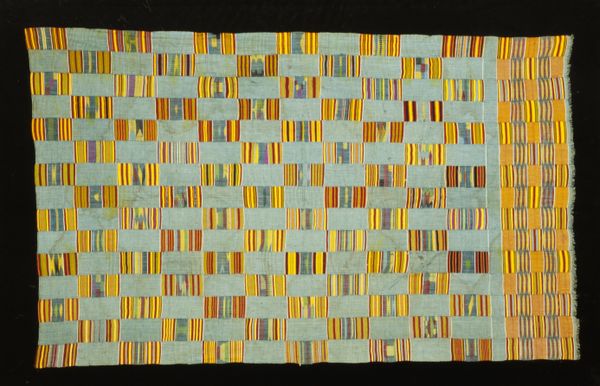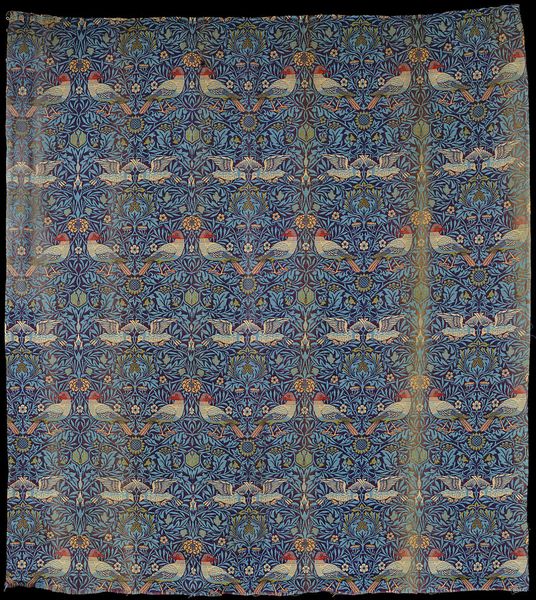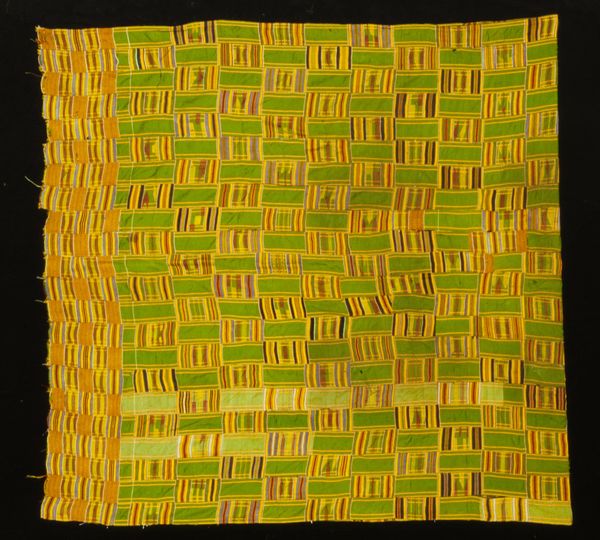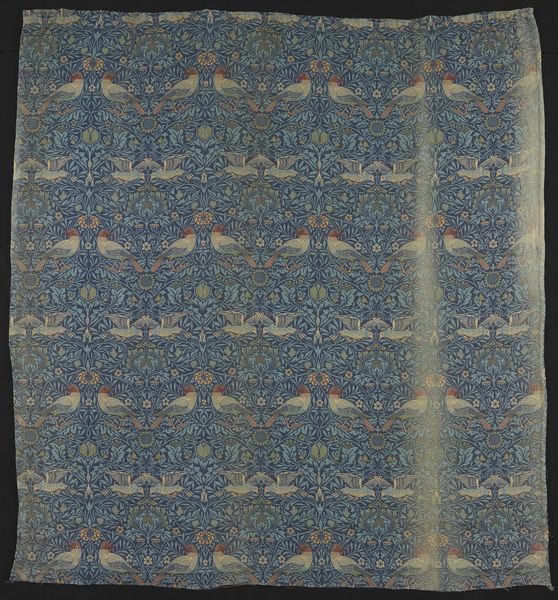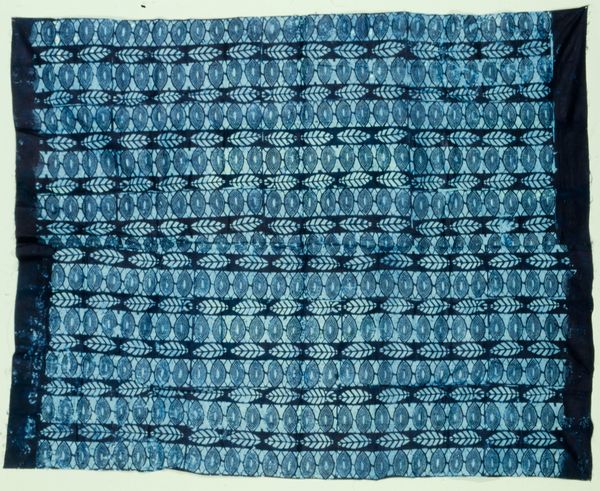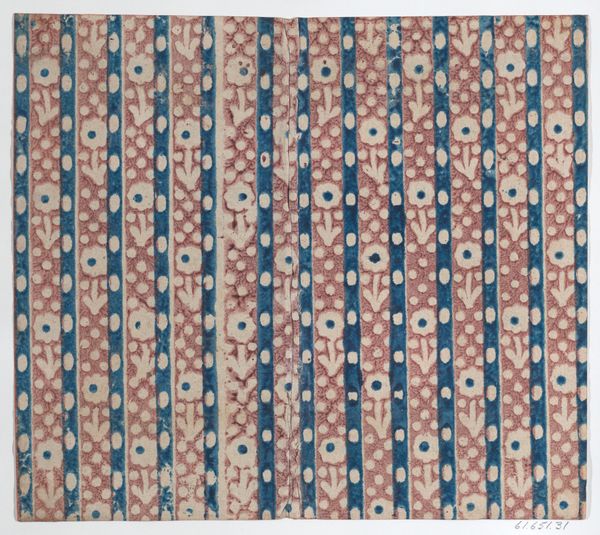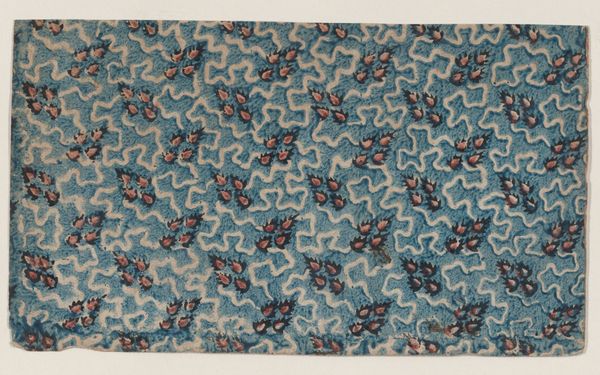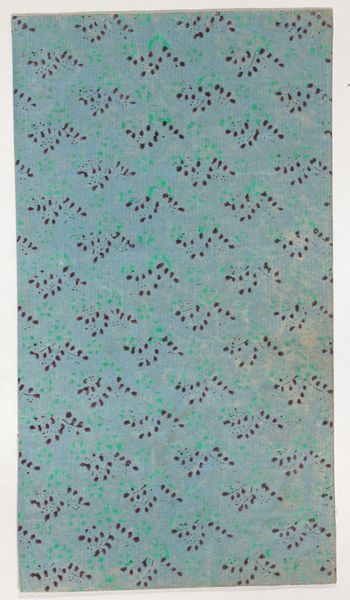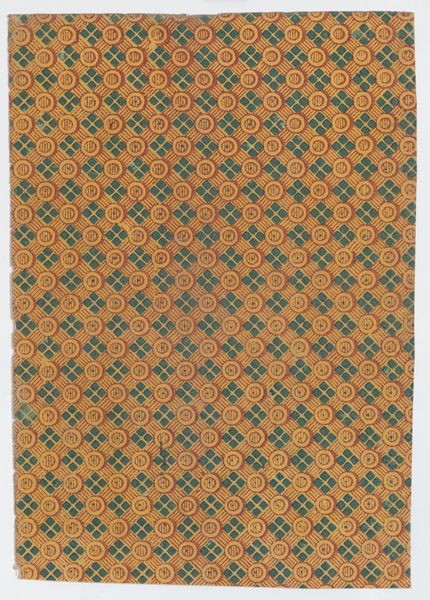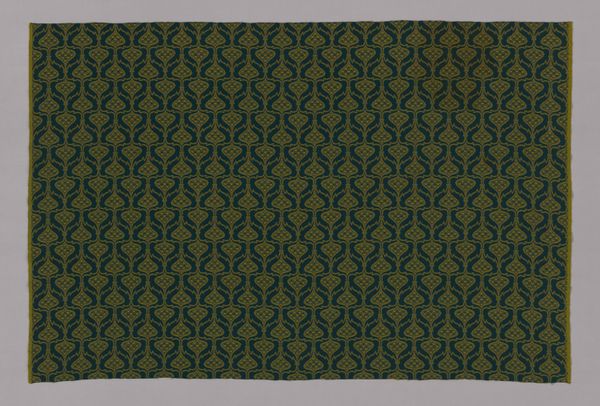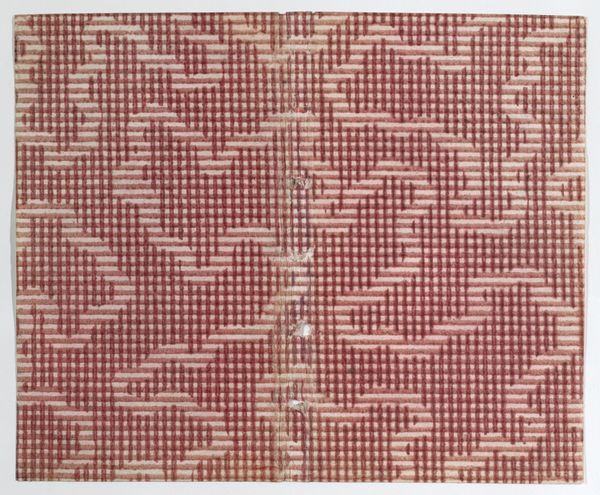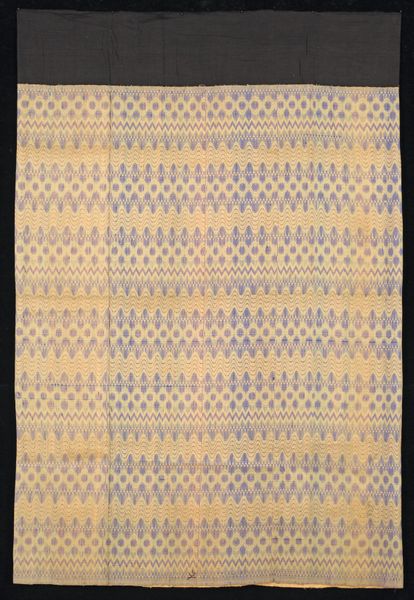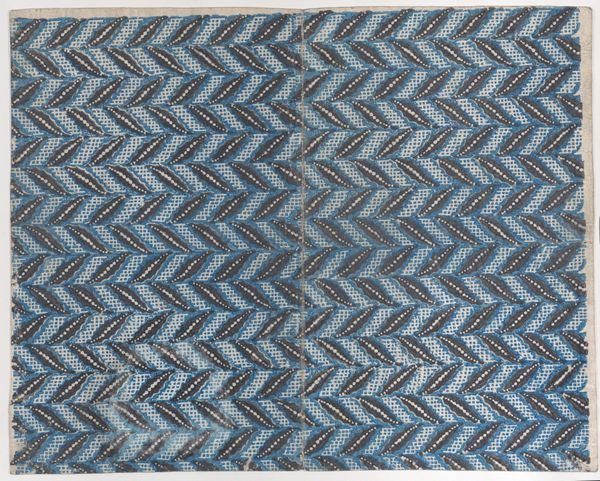
weaving, textile
#
weaving
#
textile
#
geometric
#
decorative-art
Dimensions: 70 3/4 x 81 1/4 in. (179.71 x 206.38 cm) (irregular)
Copyright: Public Domain
Curator: Ah, the “Woven Panel,” an intriguing textile piece housed here at the Minneapolis Institute of Art. Its date is estimated around the 20th century, created from cotton. Immediately, I am struck by how the artist balances formal precision with rhythmic pattern. What are your initial impressions? Editor: Blue! Utterly mesmerizing—it feels both calm and utterly charged with a strange kind of electrical energy. You know, I almost want to wear it! But it's also so… rigid. It almost feels like a very complex architectural plan. I find that really delightful and unsettling. Curator: An interesting take. The visual rhythm is structured around strict geometry, yet it suggests natural forms: zigzags like lightning and those odd square figures floating upwards like little blooming flowers on vines. Observe closely how it generates these complex arrangements by rotating two different sections across a field in shades of what is seemingly a two tone palette of pale beige/yellow and blues. Editor: Absolutely. It is that electrifying interplay—how repetition both soothes and amplifies. What exactly is "Pattern and Decoration," though? This sounds like what happens at my apartment. I like to call it organised chaos. Curator: Well, within art history it was an aesthetic movement reacting against the minimalism and intellectual severity in art of the time. By incorporating elements deemed feminine or domestic crafts, these artists elevated these crafts, or decorative arts, such as quilting or, in this case textile making, to stand on equal footing as more classical forms of art. Editor: Right, and it's almost rebellious, isn’t it? I adore how these shapes dance along that line. They just barely resemble something, a familiar object but its been obscured into something strange. Perhaps its because its origins are in domestic crafts, meant to have something like utilitarian function. Something designed to beautify a thing or make a process such as weaving yarn slightly easier. Which is where that rebellious joy seems to exist; its being completely subverted and used for an utterly creative intent. Curator: I would agree with that reading, although you should note that such utility still persists in the finished art piece; a duality to consider further on reflection perhaps. Editor: Yes, this piece—the textures, the bold and subdued colors, the architectural forms fighting against their restraints—a world humming beneath the surface... thanks to pattern. I can certainly agree to reflecting on it further. Curator: I shall, and perhaps, explore how domestic utility further serves a rebellion and commentary against accepted arts practice in history too.
Comments
No comments
Be the first to comment and join the conversation on the ultimate creative platform.
